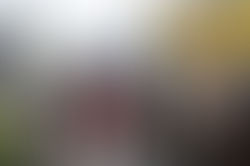Mastricht .NL 2015 | Curated by Monnik
Text by Monnik | Film productions & documentation by Denis Guzzo


WORKSHOP FOR THE NEW WORLD


Denis produced the two main video installations of the exhibition. The first had a documentary approach and was developed as a video diptych. The short documentary 'What is Work?' explore the Atmospheres of Labours. It was displayed in the first room and matched the contraposition between the New Romantic Field and the theme of Robots and Automatization.
Image slider: still frames from the installation.
THE DEFINITION OF WORK
Work is the application of desirable changes in the social and natural environment through human activity.
Work can be both physical and intellectual. We only tend to speak about labour in connection to the economy.
ASSUMPTION OF WORK
By working, we affect our environment. The kind of work we do, determines our social environment and our social status. Why we work, determines how we give meaning to our personal life.
How we work, determines the sustainability and viability of the natural environment. The key to the inclusive and sustainable world lies in the future of work.
Denis produced the two main video installations of the exhibition. The first had a documentary approach and was developed as a video diptych; the short documentary 'What is Work?' was displayed in the first room, and matched the main exhibition's concept with the contraposition between the New Romantic Field and the theme of Robots and Automatization.
Denis produced a series of scripted interviews filmed in the studio in vertical 9 x 16 format for the central video installation called' Looking Back'. The monologues were scripted by Studio Monnik; the actors tell stories about their past and present from the future.
VIDEO INSTALLATIONS
WHAT IS WORK?
LOOKING BACK


”We are searching for an inclusive and sustainable world. A world where social status has shifted from ‘I have to ‘I am. Exposing material wealth doesn’t imply a social status, thus decreasing the need for consumption. A world of self-driving cars as well as hand-knitted sweaters. Work happens in sterile, robotic factories and messy, shared attic studios.
A world of high-tech and low-tech, where everyone gets a basic income and hand, head, and heart are equally appreciated. A world without the high and low educated, and without a diploma democracy.”

THE PRESENT
THE FUTURE
Choosing between Abundance and Artificial Scarcity.
We are outgrowing our natural environment and ourselves. The ageing population, the growing gap between high and low education, the growing gap between rich and poor, and growing technological unemployment indicate that the growth paradigm has outgrown the human dimension. The depletion of natural resources, climate change, and vanishing biodiversity indicate that the growth paradigm has also outgrown the planet.
Through work, we affect our environment, determine our social environment and social status, and give meaning to our lives. Our natural environment’s decline is a consequence of the growth paradigm. How and why we work is the growth paradigm. The key to both an inclusive and sustainable world and an exploitative and destructive world is in the future of work. And this is determined by the modern ambivalence toward work concealed in the Second Machine Age and the New Romantic Field.
When automation becomes so efficient that people are no longer involved in producing, the labour market will no longer be the efficient distribution system for what is produced. If you are unemployed, you buy less or nothing. And if less or nothing is purchased, then producing no longer makes sense in a capitalist system. The Second Machine Age is forcing us to rethink the current production and distribution system. We see two options. Option one: do nothing, believing that ‘if robots and algorithms take over work, most people will simply become very poor.’ This scenario is called Artificial Scarcity. Option two: the technological redistribution of wealth. Here, we believe that ‘if robots and algorithms take over our work, we are exempt from it.’ This scenario is called Abundance.
The growing gap between rich and poor indicates the Artificial Scarcity scenario is unfolding. However, the rise of the New Romantic Field indicates the Abundance scenario is a growing possibility. The shift in defining social status from ‘I have’ to ‘I am’ simply indicates a personal interpretation and direction in a situation of economic security. The shift in social status to ‘I am’ implies an automatic de-consuming because the individual gains no status by displaying material prosperity.
“For our exhibition, Denis was able to produce beautiful work tailored to our needs and budget. He works fast, efficient and independently. He brings his ideas to the table and thinks about what is possible. This resulted in a pleasant and fruitful creative collaboration.”
Edwin Gardner


From casting to final editing, Denis produced a series of scripted interviews filmed in the studio in vertical 9 x 16 format for the central video installation called ''Looking Back". The monologues were scripted by Studio Monnik; the actors tell stories about their past and present from the future.
Below: still frames, a short video & Image slider of the installation.







































































